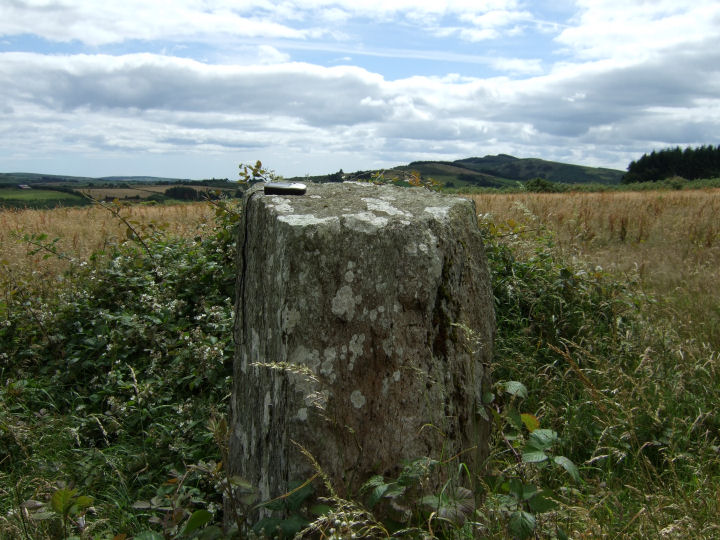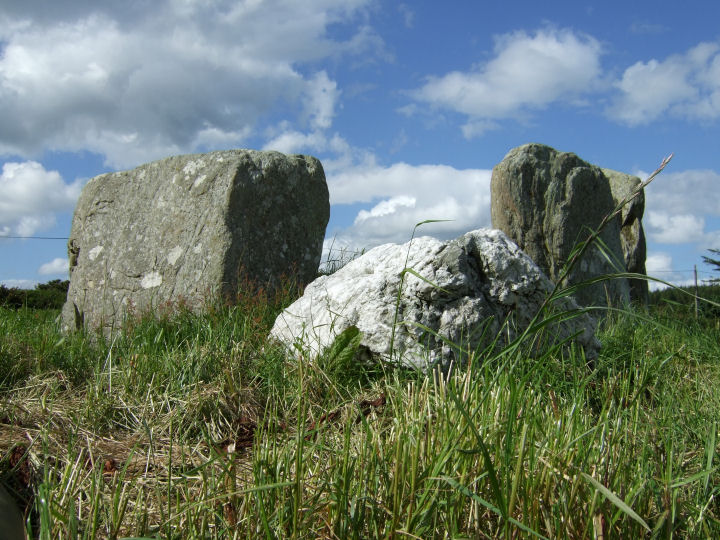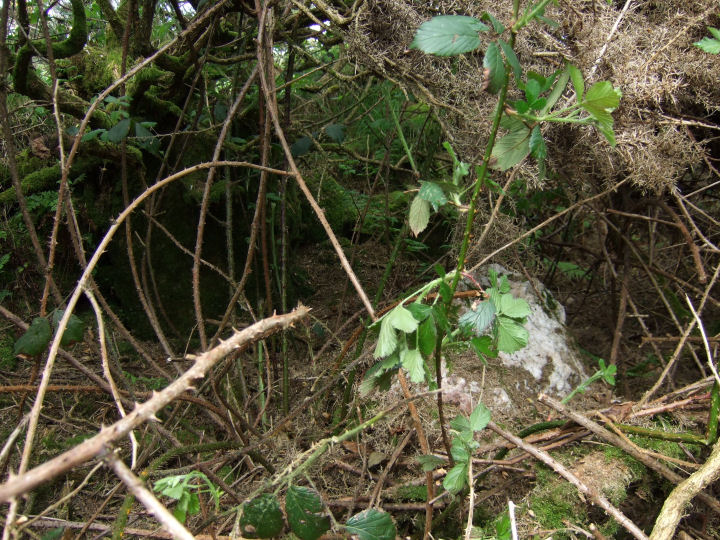
Looking west to what you will have to imagine, given the obscure horizon, is the Carrigfadda range.

Looking west to what you will have to imagine, given the obscure horizon, is the Carrigfadda range.

Looking down from the top of the ridge, to the north, at the stones and the Blind river valley below.

Looking over the prostrate stone in a southwesterly direction.

Looking back along the flat face of the standing stone to what is either a boulder/cromlech (Roberts) or the fallen second stone of a pair (Archaeological Inventory).




Looking east at the entrance-like grouping arrangement, leading in towards the highest boulder. Close-by to the rear is a ringfort.

The triangular grouping, looking south.

A ground-levelish picture showing support stones.

The rather fungal cap of the southwestern BB.

Loch Atarriff – lake of the bull – about 300m north of the monument.

The exterior of the souterrain, in the centre of the adjacent ringfort, capped with a slab.

The interior of the open chamber? and passage leading south.

The full monument grouping, looking southeast. The two quartz blocks are in the field fance just behind and between the boulder burials.

Looking roughly west. The huge standing stone, pressed tight against the eastern boulder burial, is aligned NE-SW. The western boulder is visible behind. Oh, that’s my distinctly non-archaeo builder’s level.

The western, larger, boulder burial.

The two quartz boulders, about four feet apart, are integrated in the field fence.



I’m starting to see these things in my dreams. Damn. The top of the stone.

The Carrigfadda mountain group, on the horizon, forms an eerie match to the top of the great monolith.

Using the largest stone as a backrest, the view of the line back to Maulatanvally.

The possible full line of the monument, looking north. The recorded pair are on the left hand side of the picture and the substantial, yet ignored, block is to the right.

Looking south to the Stone Pair mentioned in O’Nualláin and the Archaeological Inventory.


Blocks possibly fallen south from the structure?

Looking northeast along the line of the row.

Looking southwest along the line of the row.

One of the two sizeable quartz blocks that part-support the boulder burial.


The axial stone provides an interesting comparison point to some of the other local circles. While the level table top is almost ubiquitous the backward tilt brings Templebryan to mind, though it lacks the smooth finish of that site, Drombeg or Glanbrack. Its height off the ground also calls Templebryan to mind, or Lettergorman if it lost its field clearance. A further similarity to the latter is the angled tail-off at the upper northern side.


You could really let your imagination run with that... The split (?) boulder from above, more or less, and from the south.

The horn-like protrusions on the western side of the boulder.


Looking west to the hills. Scoot over here and you’re into the Carrigfadda-dominated valley.

All three stones, including the fallen (?) slab, looking east.

The second erect stone is visible in the field fence, centre-image.

Standing in the centre of the stone arrangement looking south to the boulder, on a line parallel to the two erect stones.

There’s a metaphor there somewhere. Oh and that’s the field wall – I didn’t go in that way, needless to say.

The beautiful pink tint to the quartz made the torn flesh worthwhile. Seriously.

The top of the axial stone, taken from inside the circle.

This picture, taken in 2006 so there’s a few shrubbery changes, shows the wide radial portal – a companion to Knocks North.


A closer view of the portals, seen side-on and from the north. Two close twins to the remaining portal at Knocks South – their enhanced width transforms the entranceway into a passage, similar in effect to the double-portalling at Carrigagrenane SW.

The low axial stone, viewed from outside the circle, with a heavily spilt stain of quartz on its table top.

The flat top of the axial stone viewed from inside the circle at it’s right hand side.

The tip of a quartz boulder lying just slightly south of the axis. There’s so many field stones and craters inside here that it’s difficult to assume any relationship to the circle.

A chunky belt of quartz spans the midsection of the northern flanker.